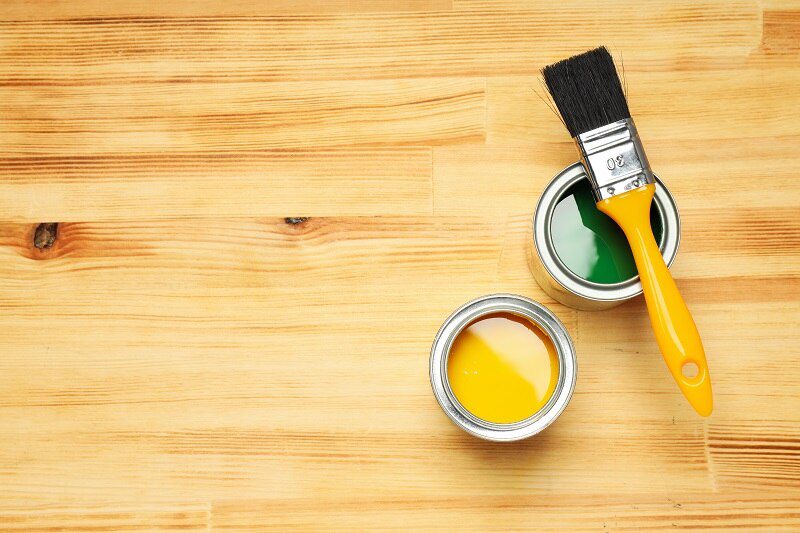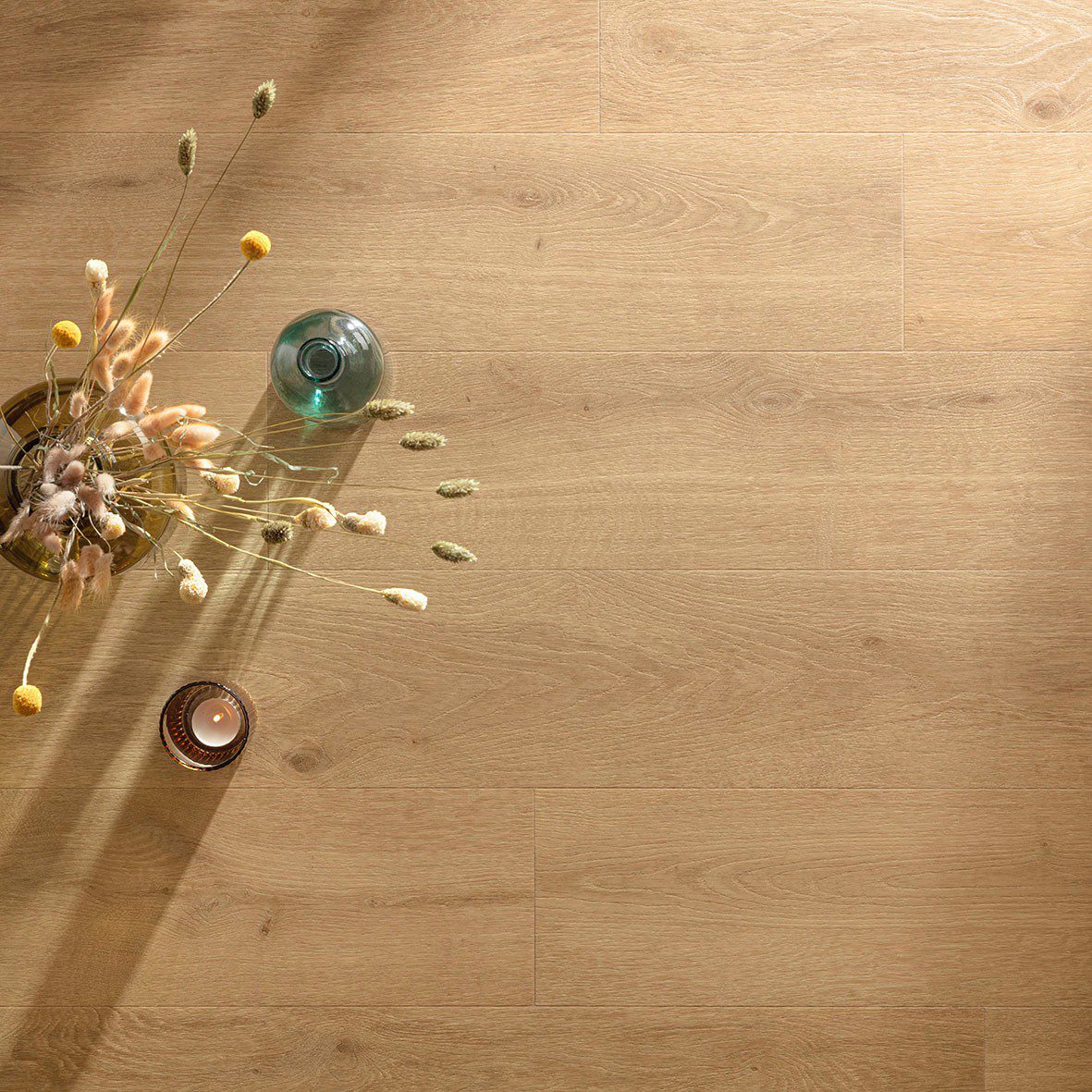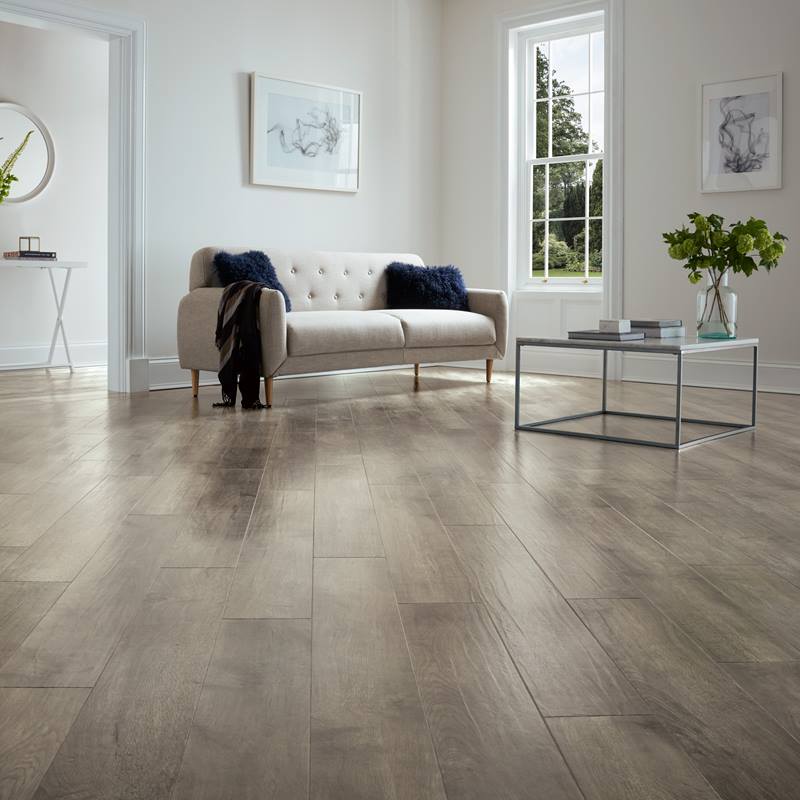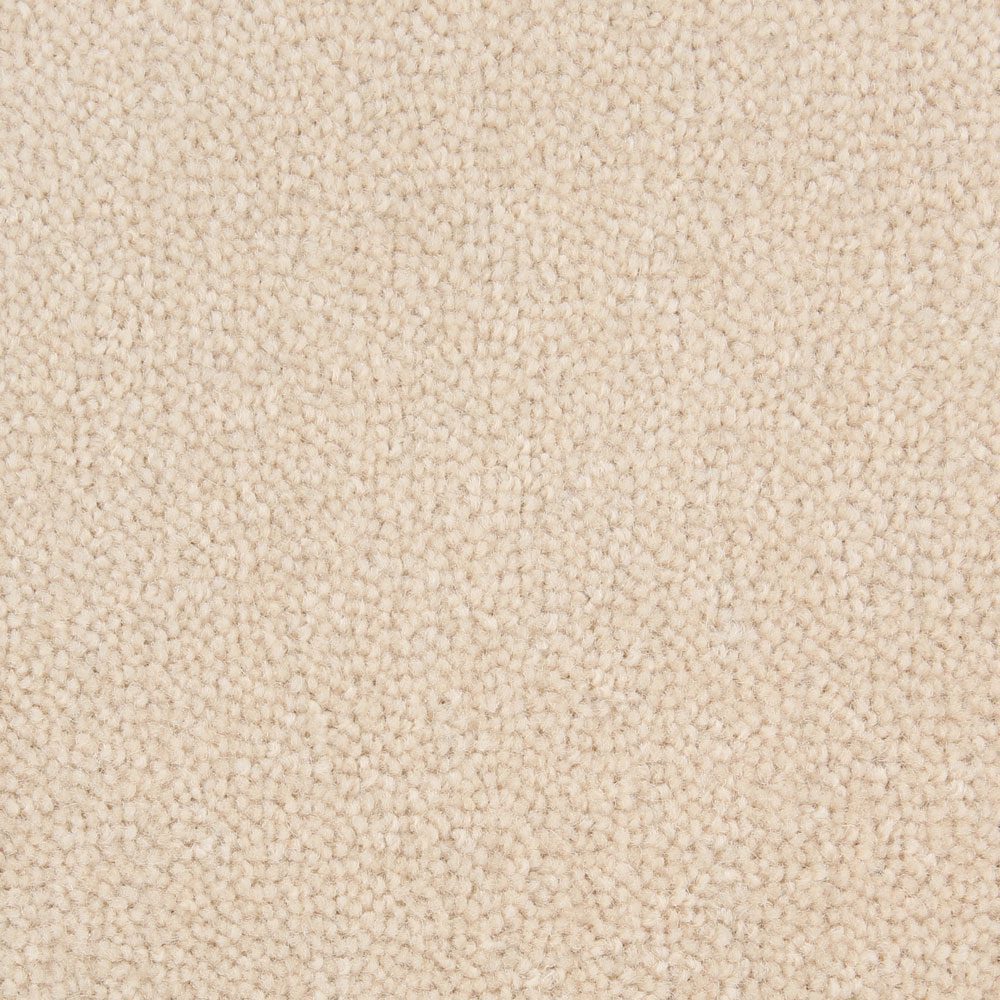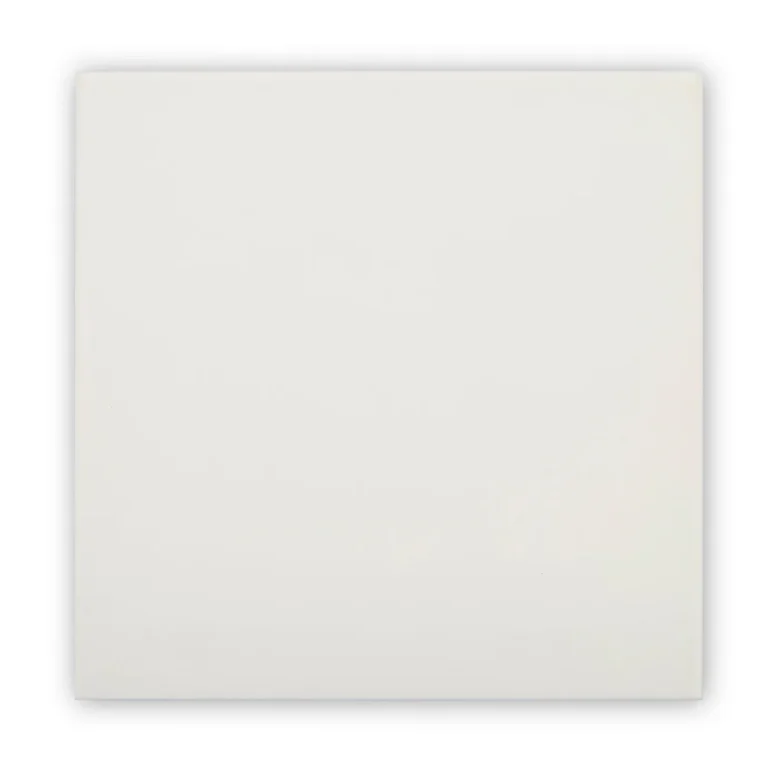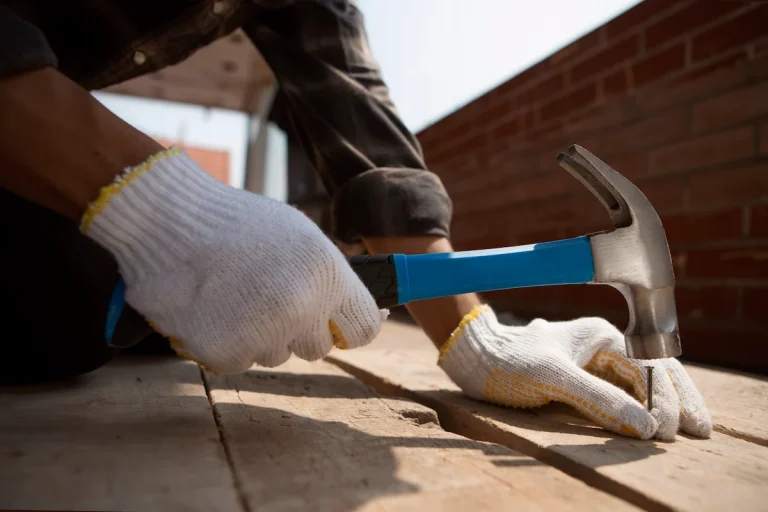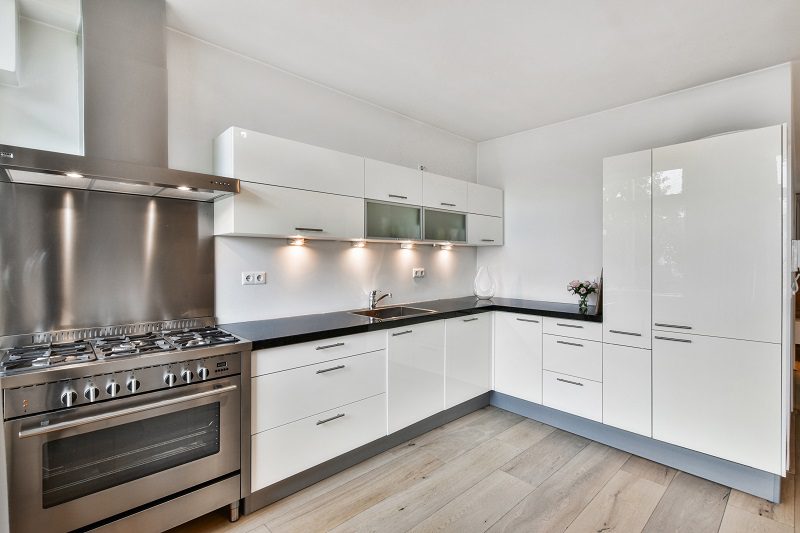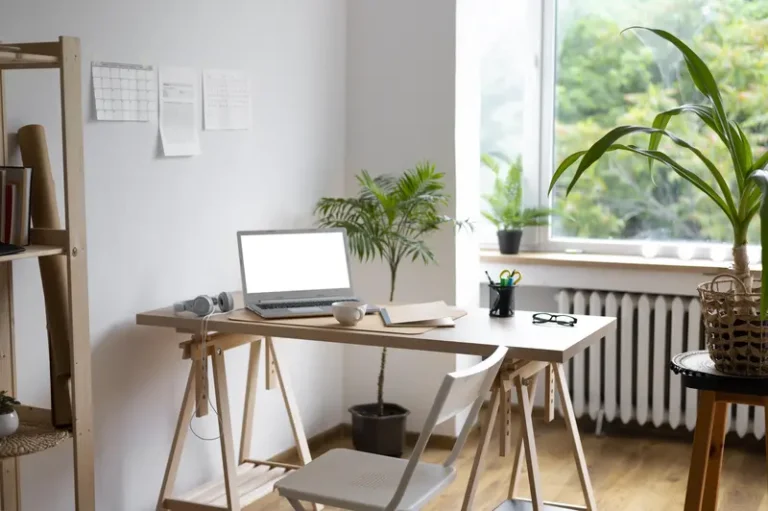Disclaimer: The information provided in this article is for general guidance only. Before undertaking any modifications, such as painting or altering your flooring, please consult with your flooring manufacturer or supplier to ensure that it does not affect any warranties or guarantees. Teka Flooring is not responsible for any issues arising from modifications that may invalidate your product warranty. For technically sound flooring advice, please feel free to contact us.
Are you looking to update the look of your vinyl flooring without the hassle and expense of replacing it? Painting your vinyl flooring can be a cost-effective and creative solution to give your floors a fresh new look. In this article, we will explore the benefits of painting vinyl flooring, the step-by-step process for painting, the type of paint to use, tips for a successful paint job, and alternative options to consider. Whether you’re a DIY enthusiast or just looking for a budget-friendly home improvement project, painting your vinyl flooring could be the answer you’ve been searching for.
Key Takeaways:
Painting vinyl flooring is a cost-effective alternative to replacing it, as it allows for customisable design options and is easy to clean and maintain. To paint vinyl flooring, the floor must be properly cleaned and prepared, then primed, painted, and sealed with multiple coats of high-quality paint. Alternatives to painting vinyl flooring include installing vinyl flooring tiles, using vinyl floor stickers, or covering the floor with a rug.
Can You Paint Vinyl Flooring?
There are a lot of people asking this question, can vinyl flooring be painted? Yes, you can paint vinyl flooring.
Painting vinyl flooring is a popular option for homeowners seeking to revamp their interiors without replacing the flooring entirely. It allows for creative customisation and transformation of the space’s aesthetic appeal.
When considering painting vinyl flooring, it’s important to start with floor coating to ensure a durable and long-lasting finish. This specialised paint is designed to withstand foot traffic and daily wear and tear.
Before applying the porch floor paint, it’s crucial to thoroughly clean and prime the vinyl surface to promote adhesion and prevent peeling. Unlike replacing the flooring, painting offers a cost-effective solution and reduces the environmental impact of disposal. It provides the flexibility to experiment with various colours and designs to match specific decor themes.
Benefits Of Painting Vinyl Flooring
Painting vinyl flooring offers several benefits, including a cost-effective alternative to replacing the entire flooring, the ability to customise designs, and easy maintenance and cleaning.
a. Cost-effective Alternative to Replacing Flooring
One of the primary benefits of painting vinyl flooring is its cost-effectiveness as an alternative to completely replacing the existing flooring. This provides a budget-friendly option for refreshing the interior.
Painting vinyl flooring offers numerous benefits, including cost savings on new flooring materials and installation. It also promotes sustainability by reducing waste disposal.
Choosing to paint instead of replacing can result in a significant transformation at a fraction of the cost, making it an affordable and practical home improvement solution.
b. Customisable Design Options
Painting vinyl flooring allows for a wide range of customisable design options, enabling homeowners to express their creativity and achieve personalised aesthetics within their living spaces.
The versatility of vinyl flooring as a canvas for artistic expression is remarkable. It opens up a myriad of possibilities for patterns, geometric designs, and intricate motifs, bringing a unique flair to any room.
Whether it’s a bold, vibrant statement or a subtle, soothing ambience, the flexibility of painted vinyl flooring caters to diverse design preferences. From modern abstract art to classic tile patterns, the range of styles that can be recreated on vinyl flooring is truly astonishing.
c. Easy to Clean and Maintain
Painted vinyl flooring is a practical and convenient flooring solution for households. It is easy to clean and maintain, requiring minimal effort for upkeep.
Compared to other types of flooring, painted vinyl floors do not need regular waxing or polishing. This reduces the overall maintenance hassle and saves time and effort for homeowners. The floor can be easily cleaned with a damp mop and gentle cleanser, making it a convenient option for busy households.
The durability of vinyl flooring also makes it resistant to stains and spills, further simplifying the cleaning process. This, combined with its easy-to-maintain nature, makes painted vinyl flooring a hassle-free and cost-effective solution for any home.
Our Vinyl Flooring Recommendation
How to Paint Vinyl Flooring
The process of painting vinyl flooring involves several essential steps, including thorough cleaning and preparation, priming the surface, applying paint, and sealing the finish for long-lasting durability.
Before diving into the painting process, it’s crucial to ensure that the vinyl flooring is free from any dust, dirt, or grease. This can be achieved by sweeping, vacuuming, and using a mild detergent solution to thoroughly clean the surface.
Once the floor is clean and dry, the next step is to apply a primer specifically designed for use on vinyl surfaces. This will help the paint adhere and create a smooth, long-lasting finish.
After the primer has dried, it’s time to apply the home floor coating paint of your choice. Whether you opt for a bold colour or a more subtle hue, ensure that the paint is specifically formulated for use on floors, such as porch floor paint, to withstand regular foot traffic.
Once the paint has been applied evenly and allowed to dry thoroughly, the final step involves sealing the finish with a compatible clear coat or sealant. This will provide added protection against wear and tear.
a. Clean and Prepare the Floor
The first step in painting vinyl flooring is to thoroughly clean and prepare the floor surface. This involves removing any dirt, debris, or contaminants and ensuring a clean and smooth base for the subsequent painting process.
One effective cleaning solution for vinyl flooring is a mixture of TSP (Trisodium Phosphate) and water. This powerful cleaner helps to eliminate grease, grime, and other difficult-to-remove substances, ensuring the surface is thoroughly cleaned.
After cleaning, it’s crucial to ensure that the floor is completely dry before proceeding with the painting process. Any residual moisture could impact the adhesion of the paint.
b. Prepare the floor
Priming the vinyl flooring is a crucial step that involves the application of a high-quality latex primer to promote paint adhesion and ensure a smooth and durable finish.
Before priming, it is essential to thoroughly clean the vinyl surface to remove any dirt, dust, or debris. The latex primer acts as a bonding agent, creating a suitable base for the paint to adhere to, preventing peeling or flaking over time.
It also helps to seal porous areas, reducing the absorption of the paint and allowing for more even coverage. Proper surface preparation is key to the success of the priming process, as it enhances the overall adhesion and durability of the paint. Using a latex primer designed specifically for vinyl surfaces ensures compatibility and maximizes the effectiveness of the primer.
c. Paint the Floor
Applying the paint to the prepared vinyl flooring involves careful and even application of the chosen floor paint to achieve the desired colour and coverage.
Before starting the application, it’s important to ensure that the surface is clean and free of any contaminants, as this can affect the adhesion and durability of the paint.
Once the vinyl flooring is thoroughly cleaned and dried, a suitable primer should be applied to promote better bonding of the paint. It’s advisable to select a high-quality floor paint that is specifically designed for vinyl surfaces.
When applying the paint, use a high-quality brush or roller to ensure an even and smooth coat. It’s essential to follow the manufacturer’s instructions regarding drying times and the number of coats required for optimal results.
Consider using a topcoat or sealant to enhance the durability and longevity of the painted vinyl flooring.
d. Seal the Floor
The final step in painting vinyl flooring is to seal the painted surface using a durable finish to enhance longevity, protection, and resistance to wear and tear.
Sealing the painted vinyl flooring is crucial as it provides a layer of protection that helps maintain vibrant colours and prevents chipping or peeling.
The use of a suitable finish ensures that the surface is durable and can withstand daily foot traffic and cleaning. This not only preserves the aesthetic appeal of the painted surface but also extends the lifespan of the flooring, reducing the need for frequent touch-ups or repainting.
Type of Paint Should be Used
Selecting the appropriate type of paint for vinyl flooring is crucial. Options include emulsion paint, acrylic paint, and epoxy paint, each with distinct characteristics and suitability for different applications.
a. Latex Paint
One of the best paint for vinyl flooring is latex paint. It It is a popular choice for painting vinyl flooring. It is known for its ease of application, wide colour range, and reliable coverage, making it a versatile option for floor transformations.
One of the significant advantages of using latex paint on vinyl flooring is its application benefits. Due to its water-based nature, latex paint dries quickly, allowing for faster project completion. It also provides excellent adhesion to the vinyl surface, ensuring a long-lasting finish.
The extensive range of colours available in latex paint allows homeowners to achieve their desired aesthetic. From subtle neutrals to vibrant hues, they can enhance the visual appeal of their flooring.
b. Acrylic Paint
Acrylic paint offers durability and a resilient finish when used on vinyl flooring. It provides long-lasting colour retention and resistance to wear and tear, making it an ideal choice for high-traffic areas.
When applied to vinyl flooring, acrylic paint forms a protective barrier that guards against scratches, stains, and moisture. This extends the lifespan of the flooring, making it a practical and cost-effective option. Its quick drying time and low maintenance requirements also add to its appeal, allowing for hassle-free application and upkeep.
With a wide range of colours available, acrylic paint offers ample flexibility in design and customisation, catering to diverse aesthetic preferences. Its application on vinyl flooring enhances its water resistance, making it suitable for use in kitchens, bathrooms, and other moisture-prone areas.
c. Epoxy Paint
Epoxy paint is well-suited for vinyl flooring in high-traffic areas, offering superior protection, resilience, and a seamless finish, making it an ideal choice for spaces requiring robust flooring solutions.
The use of epoxy paint on vinyl flooring provides several advantages. Firstly, it forms a protective layer that safeguards the underlying vinyl material from abrasions, moisture, and chemical exposure. This leads to increased durability and longevity, especially in areas prone to heavy foot traffic.
The seamless finish achieved with epoxy paint not only enhances the aesthetics of the flooring but also makes maintenance and cleaning a hassle-free task. Its resistance to stains and easy-to-clean nature further contribute to its suitability in demanding environments.
Tips For Painting Vinyl Flooring
To achieve successful results when painting vinyl flooring, several key tips should be followed, including the use of a high-quality primer, the application of multiple coats of paint, and allowing sufficient drying time between each stage of the process.
When selecting a primer for painting vinyl flooring, it is crucial to opt for one specifically designed for adhesion to smooth surfaces. This will ensure that the paint adheres effectively to the vinyl, creating a long-lasting finish.
Applying multiple thin coats of paint, rather than a single thick layer, helps to achieve even coverage and a more resilient surface. Allowing each coat of primer and paint to dry completely before applying the next layer is essential for the durability of the finish. Rushing this stage can lead to peeling or uneven colouring, detracting from the overall look of the flooring.
a. Use a High-Quality Primer
Utilising a high-quality primer specifically designed for vinyl flooring is crucial to ensure optimal paint adhesion, establish a suitable base, and enhance the durability of the paint coat for a long-lasting finish.
When applying paint on vinyl flooring, it’s crucial to use a high-quality primer. This primer serves as the foundation for a successful and durable finish by promoting superior paint adhesion and preparing the base for a uniform application. It fills in porous areas and irregularities, creating a strong bond between the paint and the vinyl surface.
A specialised primer formulated for vinyl flooring goes a step further by fortifying the overall paint coat. It provides enhanced protection against wear, stains, and adhesion issues, resulting in a longer lifespan for the painted surface. In short, investing in the right primer is essential for achieving a professional and resilient paint finish on vinyl flooring.
b. Use Multiple Coats of Paint
Applying multiple coats of paint to the vinyl flooring ensures comprehensive coverage, enhanced durability, and a uniform finish, creating a robust and visually appealing surface.
Regarding vinyl flooring, multiple paint coats are crucial for achieving exceptional quality and durability. The initial coat serves as a base layer, smoothing out imperfections and creating a seamless surface. Additional coats further strengthen the floor, creating a protective barrier against everyday wear and tear.
By applying multiple coats of paint, you can ensure a consistent colour and finish throughout the entire flooring. This eliminates any patchiness or unevenness that may occur with a single-coat application, resulting in a polished and professional appearance for your floors.
c. Ensure sufficient drying time
Allowing sufficient drying time between each stage of the painting process is essential for ensuring the completion of the project and achieving a durable, flawless finish on the vinyl flooring.
Proper drying not only impacts the longevity of the paint but also contributes to the overall aesthetic appeal.
Failure to respect the recommended paint drying times may result in uneven coverage, bubbling, or premature wear and tear.
It’s crucial to adhere to these guidelines as they directly influence the project’s timeline and cost, making it necessary to prioritise patience and precision over expediency.
What are the Alternatives to Painting Vinyl Flooring?
Along with painting, there are various alternative approaches to enhancing vinyl flooring. This includes the installation of vinyl flooring tiles, the use of vinyl floor stickers, and the option of covering the floor with a rug for a temporary or decorative solution.
When considering the installation of vinyl flooring tiles, it’s crucial to choose a style and pattern that complements the existing decor and provides a durable, long-lasting solution.
The application of vinyl floor stickers offers a creative and budget-friendly way to update the flooring with various designs and patterns, allowing for a quick transformation without the need for extensive installation.
Utilising rugs as temporary or decorative coverings provides a versatile and easily interchangeable option, allowing for a change in the floor’s aesthetics whenever desired.
a. Installing Vinyl Flooring Tiles
Installing vinyl floor tiles provides a durable and customisable alternative to painting, offering a DIY-friendly solution for updating the appearance and functionality of the existing vinyl flooring.
One of the key advantages of using vinyl floor tiles is their exceptional durability. They are resistant to scratches, stains and moisture, ensuring a long-lasting solution and reducing the need for frequent maintenance.
Another notable benefit is the wide range of designs and patterns available. This allows homeowners to customise their flooring to match their unique style and preferences.
The installation process for vinyl floor tiles is relatively simple, making it an attractive DIY project for many homeowners. With the right tools and basic skills, individuals can easily transform their living spaces with minimal effort and cost.
b. Using Vinyl Floor Stickers
Vinyl floor stickers offer a convenient and decorative solution for enhancing the appearance of vinyl flooring. They provide an array of patterns and designs to personalise the space with minimal installation effort.
The versatility of vinyl floor stickers allows individuals to easily swap between different patterns and styles. This ensures that the ambience of a room can be effortlessly transformed to suit changing preferences.
With vinyl floor stickers, there’s a wide range of aesthetic options. These options include realistic wood or tile designs, intricate geometric patterns, and vibrant colours, adding a touch of personality to any space.
The ease of application makes these stickers an ideal choice for those seeking a non-permanent solution for their floors.
c. Covering the Floor with a Rug
Covering the vinyl flooring with a rug presents a temporary and decorative option for altering the visual impact of the floor, offering flexibility and versatility in creating personalised and changeable interior settings.
Rugs serve as versatile design elements that can add warmth, texture, and colour to a room. They can be easily moved or changed to create different looks, making them ideal for those who enjoy experimenting with their interior decor.
Whether you prefer a cosy, shaggy rug for a bohemian vibe or a sleek, modern design to anchor a living space, rugs offer an easy way to update the aesthetic of your room without committing to a permanent change.
They can define zones within an open-plan space, adding visual interest and delineation.
At the end of the day, painting vinyl flooring becomes seamless if you use high-quality vinyl. For your discerning taste, elevate your space with the top-tier Luxury Vinyl Tiles from TEKA Flooring.
TEKA Flooring offers a comprehensive range, whether you prefer herringbone, irregular, or weave patterns. Uncertain about which design would enhance your space? Simply reach out to us for guidance! TEKA Flooring is dedicated to assisting you in selecting the ideal option.
Read also: 8 Waterproof And Luxury Vinyl Kitchen Flooring Ideas


























